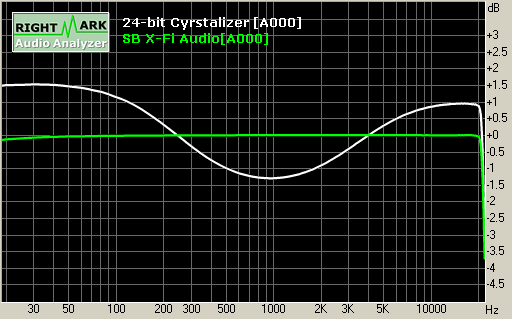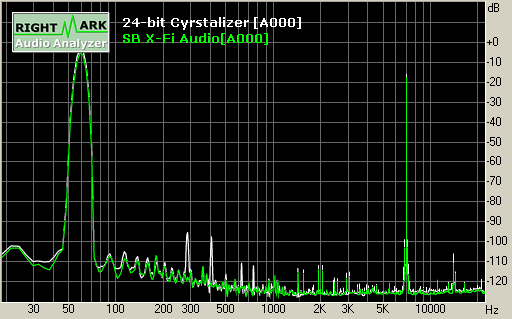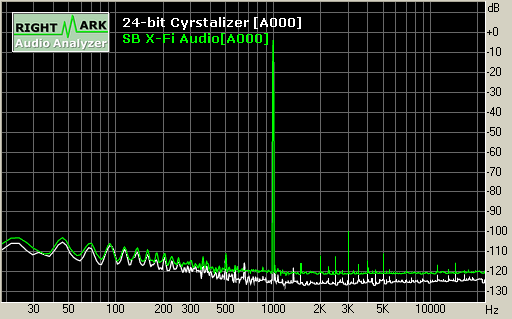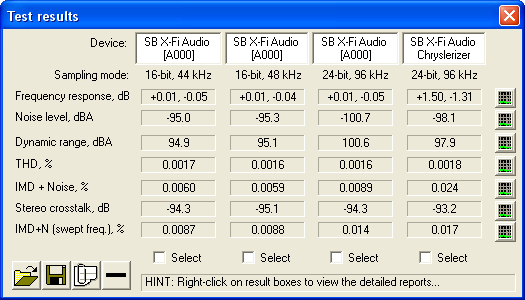Page 5 - Software Cont'd
CMSS3D
There are two key technologies that are required for 3D positional audio to work, one of which is the human ear and the other is the algorithms, the head related transfer functions. As we know Creative bought Aureal and Sensaura, two companies that had great HRTF's. It would seem that Creative did not let that IP go to waste! The technology originates from UC Davis, where a lot of research has been done to understand how the ear and brain work to be so accurate.
Creative had CMSS on the previous generations of sound cards and you still get all the old modes, but the X-Fi adds the CMSS-3DHeadphone. The short of it is the CMSS-3DHeadphone is excellent. The promise here is that headphones have the ability to offer superior surround quality than an actual set of surround speakers.
But, there is a slight problem.
Creative would like you to believe that their 3D-Headphone setting is the best in the industry. It is amazingly good, but it imparts a slight cupping-of-the-ears sound which I have not noticed with Dolby's headphone technology. On music it will change the timbre slightly, changing 'eh' sounds into 'ah' sounds. It is otherwise excellent in fooling the brain, but leave it off for music please.
24-bit Crystalizer
Hm. Word thinks it is spelled Crystallizer. I'll let it slide due to the Xtreme nature of the X-Fi. So now we have all this DSP power. One thing that Creative has been able to do with all that massive power of its DSP is to do cool effects on sound streams in real time. But wait (cue echo effect)! There's a lot of talk about what the 24-bit Christalizer is, exactly. Creative ain't talking and due to the way it works, they say, the tests around the net are also wrong.

What is interesting is that it drops off dramatically at 20 kHz, which smacks a lot like 44.1 kHz sampling. It may be working in 24 bits, but it's 44.1 kHz.

IMD distortion is still very clean, but it does introduce some noise.
What we know is that for CD's that have been pushed "hot" the Crystalizer will not offer you very much in the way of improvement, since the dynamic range is already non-existant. I would imagine the best application for the Crystalizer will be for portables or car audio, where the effect will give the impression of greater dynamic range when the environment doesn't.

RMAA 5.5, IMD + Noise.
Hilbert noted in his review of the X-Fi Fatal1ty that you'll either love it or leave it. If you are a purist, you'll leave the Crystallizer off. Sonically it works like a loudness button, boosting treble and bass. It works wonders for noisy environments, but why you would want something like that in your home is beyond me. My apologies to the Inquirer, it works yes, but it is still a gimmick. This may be the greatest marketing gimmick of the year. What isn't funny, however, is that the X-Fi can apply this effect in real time, with no performance loss. Machines that do this kind of signal processing for broadcast radio cost thousands.
RMAA 5.5
Let's do a very quick RMAA summary. RMAA 5.5 was used to check the overall quality of the X-Fi.

What RMAA tells us is that the X-Fi has excellent quality output! RMAA also points out that the 24-bit Crystalizer is doing something, but is less performance of the unprocessed 24 bit mode. Overall, the X-Fi is excellent.
